Peugeot Partner VS Volvo V60 – Specs, Efficiency & Price Comparison
Which model is the better choice – the Peugeot Partner or the Volvo V60? We compare performance (136 HP vs 455 HP), boot capacity (1800 L vs 519 L), efficiency (17.40 kWh5.20 L vs 0.70 L), and of course, the price (20500 £ vs 41600 £).
Find out now which car fits your needs better!
The Peugeot Partner (Cargo Van) is powered by a Electric, Diesel or Petrol engine and comes with a Automatic or Manuel transmission. In comparison, the Volvo V60 (Estate) features a Petrol MHEV or Plugin Hybrid engine and a Automatic gearbox.
When it comes to boot capacity, the Peugeot Partner offers 1800 L, while the Volvo V60 provides 519 L – depending on what matters most to you. If you’re looking for more power, you’ll need to decide whether the 136 HP of the Peugeot Partner or the 455 HP of the Volvo V60 suits your needs better.
There are also differences in efficiency: 17.40 kWh5.20 L vs 0.70 L. In terms of price, the Peugeot Partner starts at 20500 £, while the Volvo V60 is available from 41600 £.
Compare all the key specs now and find out which model fits your lifestyle best!
Peugeot Partner
The Peugeot Partner is a versatile and practical vehicle, ideal for both urban and rural settings. Its spacious interior and adaptable seating make it a popular choice for families and businesses alike. With a focus on reliability and efficiency, the Partner is well-suited to meet the demands of everyday transport.
detailsVolvo V60
The Volvo V60 exudes a sense of refined elegance with its sleek design and smooth contours, making it a standout in the estate car category. Inside, it offers a harmonious blend of luxury and functionality with premium materials and state-of-the-art technology, ensuring a comfortable driving experience. Its performance on the road is impressive, combining efficient handling with a powerful yet quiet ride, making it a favourite for those who appreciate both style and substance.
details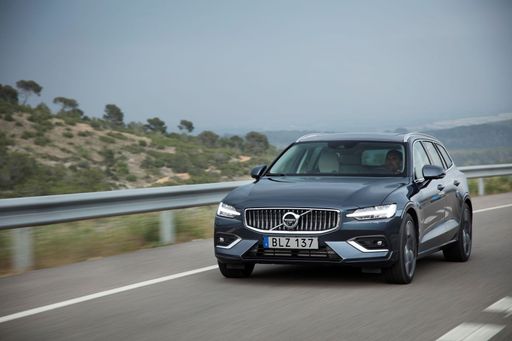 @ media.volvocars.com
@ media.volvocars.com
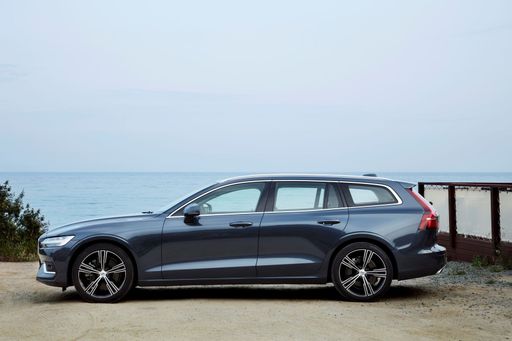 @ media.volvocars.com
@ media.volvocars.com
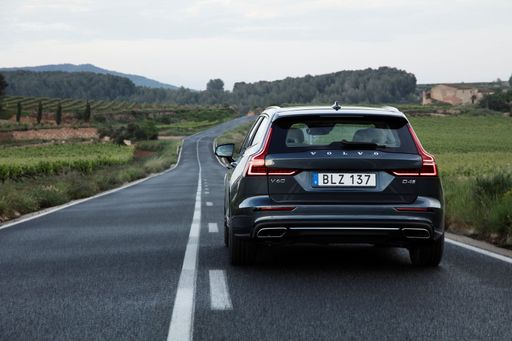 @ media.volvocars.com
@ media.volvocars.com
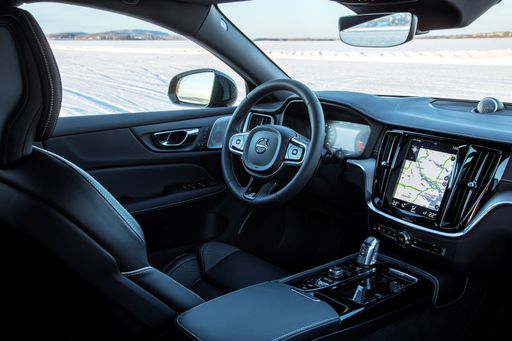 @ media.volvocars.com
@ media.volvocars.com
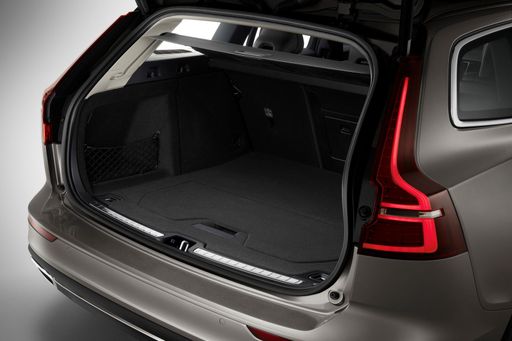 @ media.volvocars.com
@ media.volvocars.com

|
|
|
|
|
Costs and Consumption |
|
|---|---|
|
Price
20500 - 33800 £
|
Price
41600 - 64200 £
|
|
Consumption L/100km
5.2 - 6.3 L
|
Consumption L/100km
0.7 - 6.2 L
|
|
Consumption kWh/100km
17.40 kWh
|
Consumption kWh/100km
-
|
|
Electric Range
354 km
|
Electric Range
92 km
|
|
Battery Capacity
-
|
Battery Capacity
14.70 kWh
|
|
co2
0 - 143 g/km
|
co2
17 - 140 g/km
|
|
Fuel tank capacity
53 - 61 L
|
Fuel tank capacity
60 L
|
Dimensions and Body |
|
|---|---|
|
Body Type
Cargo Van
|
Body Type
Estate
|
|
Seats
2 - 5
|
Seats
5
|
|
Doors
4 - 5
|
Doors
5
|
|
Curb weight
1329 - 1813 kg
|
Curb weight
1734 - 2064 kg
|
|
Trunk capacity
1800 L
|
Trunk capacity
519 L
|
|
Length
4401 - 4751 mm
|
Length
4778 mm
|
|
Width
1848 mm
|
Width
1850 mm
|
|
Height
1796 - 1812 mm
|
Height
1432 mm
|
|
Payload
611 - 991 kg
|
Payload
466 - 506 kg
|
Engine and Performance |
|
|---|---|
|
Engine Type
Electric, Diesel, Petrol
|
Engine Type
Petrol MHEV, Plugin Hybrid
|
|
Transmission
Automatic, Manuel
|
Transmission
Automatic
|
|
Transmission Detail
Schaltgetriebe, Automatikgetriebe
|
Transmission Detail
Automat. Schaltgetriebe (Doppelkupplung), Automatikgetriebe
|
|
Drive Type
Front-Wheel Drive
|
Drive Type
Front-Wheel Drive, All-Wheel Drive
|
|
Power HP
102 - 136 HP
|
Power HP
197 - 455 HP
|
|
Acceleration 0-100km/h
11.2 - 14.8 s
|
Acceleration 0-100km/h
4.6 - 7.6 s
|
|
Max Speed
135 - 184 km/h
|
Max Speed
180 km/h
|
|
Torque
205 - 300 Nm
|
Torque
300 - 709 Nm
|
|
Number of Cylinders
3 - 4
|
Number of Cylinders
4
|
|
Power kW
75 - 100 kW
|
Power kW
145 - 335 kW
|
|
Engine capacity
1199 - 1499 cm3
|
Engine capacity
1969 cm3
|
General |
|
|---|---|
|
Model Year
2024
|
Model Year
2024
|
|
CO2 Efficiency Class
A, E
|
CO2 Efficiency Class
E, B
|
|
Brand
Peugeot
|
Brand
Volvo
|
Peugeot Partner
Exploring the Peugeot Partner: A Blend of Versatility and Innovation
The Peugeot Partner has long been a staple in the world of light commercial vehicles, offering practicality and reliability. However, with the latest iterations, Peugeot has taken a bold step by integrating advanced technology and modern design to create a vehicle that's not just functional, but also efficient and environmentally friendly. Let's dive into the technical details and innovations that make the latest Peugeot Partner a standout choice in its class.
Efficient Powertrains: Diesel, Petrol, and Electric Choices
The 2024 Peugeot Partner provides a wide range of powertrains to suit different needs and preferences. Whether you're looking for the tried-and-tested efficiency of a diesel engine, the simplicity of petrol, or the future-ready appeal of electric, the Partner offers them all. With power outputs ranging from 102 to 136 PS and options for automatic and manual transmissions, it caters to those who desire flexibility in vehicle performance.
Embracing Electric: The E-Partner Revolution
One of the most notable features of the latest Peugeot Partner is the introduction of the e-Partner, an all-electric variant. This model comes equipped with a 50 kWh battery, providing a significant range of up to 354 km on a single charge, making it ideal for urban deliveries or longer commutes with no emissions. Its front-wheel-drive layout and electric motor deliver 136 PS, ensuring a lively yet smooth driving experience.
Room for More: Versatility and Cargo Space
Peugeot understands the importance of adaptability in commercial vehicles. The Partner offers up to 1,800 litres of cargo space, or the capacity to carry payloads ranging from 611 to 991 kg. Additionally, the choice of 4 to 5 doors and seating configurations from 2 to 5 seats ensures that the Partner can be customised to meet the specific needs of various business requirements.
Compact Yet Capable: Dimensions and Design
The Peugeot Partner showcases a clever balance of compact exterior dimensions and a spacious interior. With lengths between 4,401 mm and 4,751 mm, and a width of 1,848 mm, it delivers easy manoeuvrability in urban environments without compromising on cargo capacity. The height ranges from 1,796 mm to 1,812 mm, ensuring stability and on-road presence.
An Eye on Sustainability: CO2 Emissions and Efficiency
Peugeot's commitment to sustainability is evident in the Partner's diverse powertrain options and their associated CO2 emissions, which range from zero for the electric variant to a maximum of 143 g/km for certain internal combustion engine models. This variety allows businesses to choose based on their environmental goals as well as operational needs.
A Multi-Talented Performer: Performance and Practicality
With acceleration figures from 0-100 km/h in just 11.2 seconds for some models and a top speed of up to 184 km/h, the Partner is not just about practicality; it's also about performance. The available torque between 205 and 300 Nm contributes to confident driving dynamics whether navigating urban settings or cruising on the motorway.
Conclusion: The Partner of the Future
The Peugeot Partner continues to be a frontrunner in the small van segment, thanks to its innovative approach to design, fuel efficiency, and technological integration. By providing a range of powertrain options and configurations, the Partner meets the diverse needs of today's businesses while keeping an eye firmly on the future. Whether opting for the environmentally friendly e-Partner or the robust diesel variant, Peugeot has crafted a vehicle that truly earns the name "Partner".
Volvo V60
The Volvo V60: A Glimpse at Scandinavian Ingenuity
The Volvo V60 stands as a beacon of the brand's commitment to combining luxury, performance, and environmental mindfulness in a family-friendly estate car. Boasting sleek looks and equipped with an array of powertrains, the V60 doesn't just cater to traditional fossil fuel users but also offers advanced plug-in hybrid options, pushing the boundaries of modern automotive engineering.
Powertrain Perfusion: A Diverse Line-up
Under the bonnet of the Volvo V60, you'll find a versatile range of engines, from the efficient mild-hybrid units to the high-performing plug-in hybrids. The series offers power outputs ranging from 197 to an impressive 455 PS, ensuring that there is a model to suit every driving preference. The innovative use of mild-hybrid technology not only maximises fuel efficiency, with consumption figures as low as 6.2 L/100 km, but also reduces emissions, making it a forward-thinking choice for everyday journeys.
Innovative Plug-in Hybrids
Among the V60's standout offerings is the T8 Plug-In Hybrid version, which combines a petrol engine with an electric motor, delivering an imposing 455 PS with an astonishingly low consumption of just 0.7 L/100 km. This hybrid variant also features an electric-only range of up to 92 km, allowing drivers to enjoy zero-emissions driving, which is perfect for urban commutes. The implementation of a 14.7 kWh battery lies at the heart of its efficiency, showcasing Volvo's dedication to sustainable innovation.
Design and Dynamics
Volvo has always been known for its iconic design aesthetics, and the V60 is no exception. Its elegant and dynamic exterior is complemented by a meticulously crafted interior, packed with cutting-edge features that enhance comfort and connectivity. The well-appointed cabin is spacious enough to accommodate five passengers comfortably, offering a generous baggage capacity of 519 litres—perfect for family getaways or transporting everyday essentials.
Advanced Safety Features
Volvo's dedication to safety is enshrined in the V60, equipped with advanced technologies aimed at protecting all road users. From adaptive cruise control to lane-keeping assistance and driver alert control, the V60's comprehensive safety suite ensures peace of mind even in challenging driving conditions. Volvo's IntelliSafe technology acts as an additional co-pilot, helping to mitigate accidents before they occur.
A Statement on Sustainability
As part of Volvo's larger ambition towards sustainability, the V60 represents a critical step forward. With improved fuel efficiency and lower CO2 emissions ranging from 17 to 168 g/km, this model aligns with global efforts to combat climate change. The broad adoption of hybrids and advancements in electric driving capabilities underscore Volvo's strategy to become a leader in sustainable transportation solutions.
Conclusion: The Future of Versatile Driving
The Volvo V60 is more than just an estate car; it's a testament to the future of driving—a blend of style, performance, and ecological responsibility. With its array of configurations, including the revolutionary plug-in hybrids, the V60 provides an irresistible option for eco-conscious drivers who refuse to compromise on sophistication and driving pleasure. As the automotive industry evolves, Volvo's V60 firmly positions itself at the cutting edge, proving that luxury and sustainability can indeed go hand in hand.
The prices and data displayed are estimates based on German list prices and may vary by country. This information is not legally binding.
